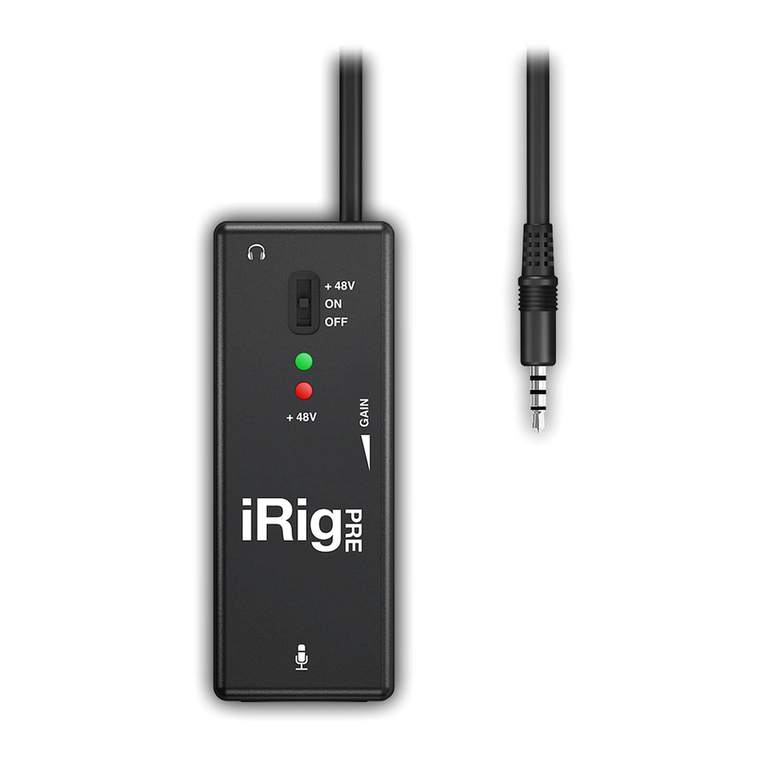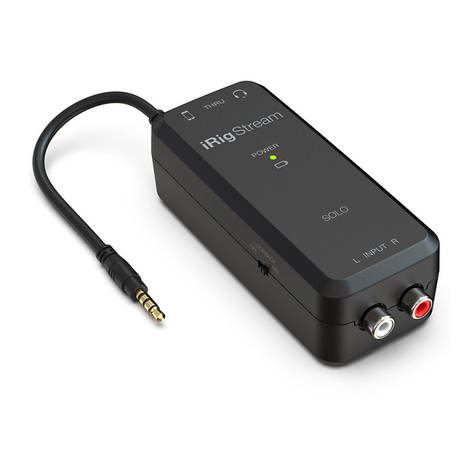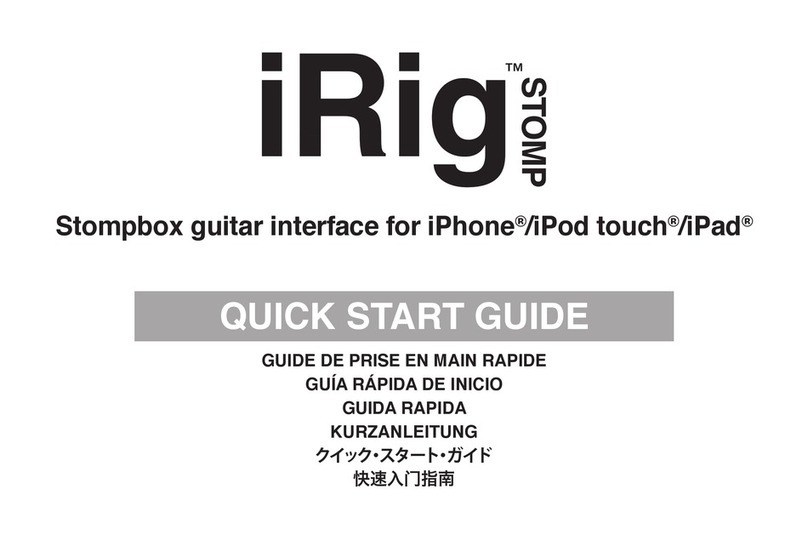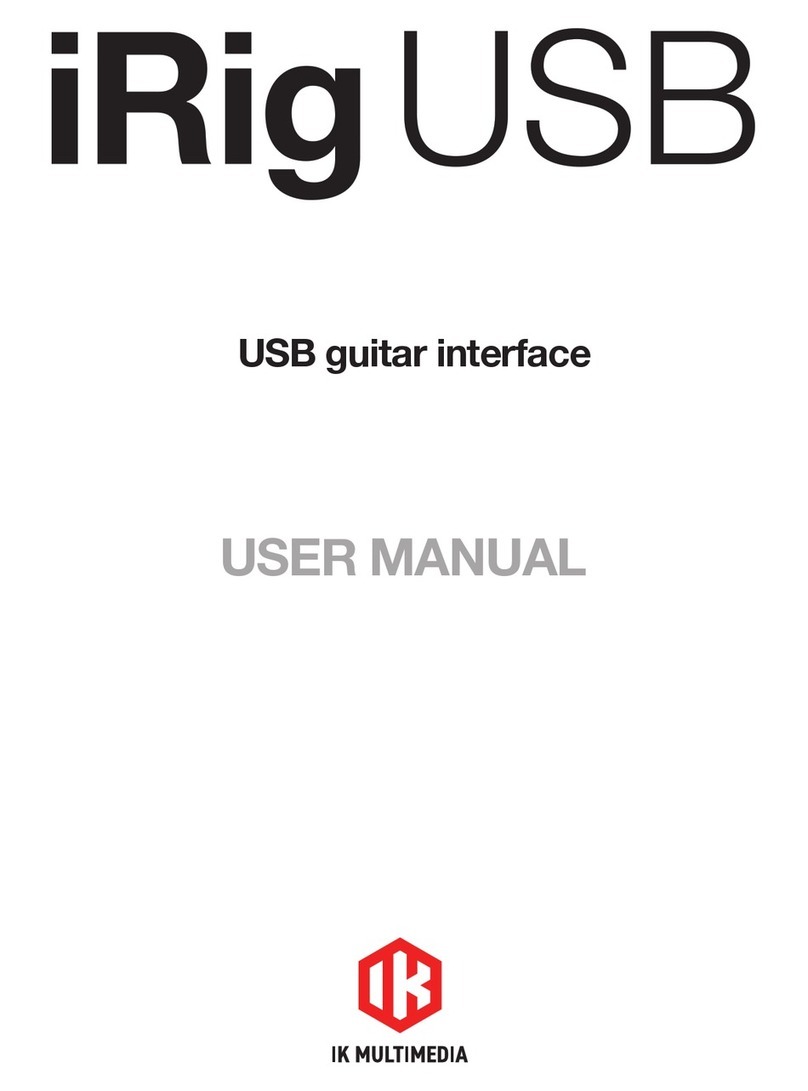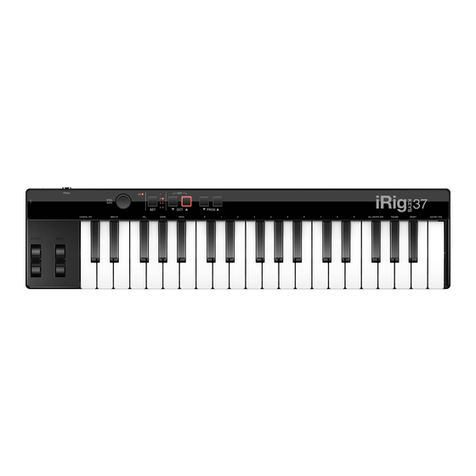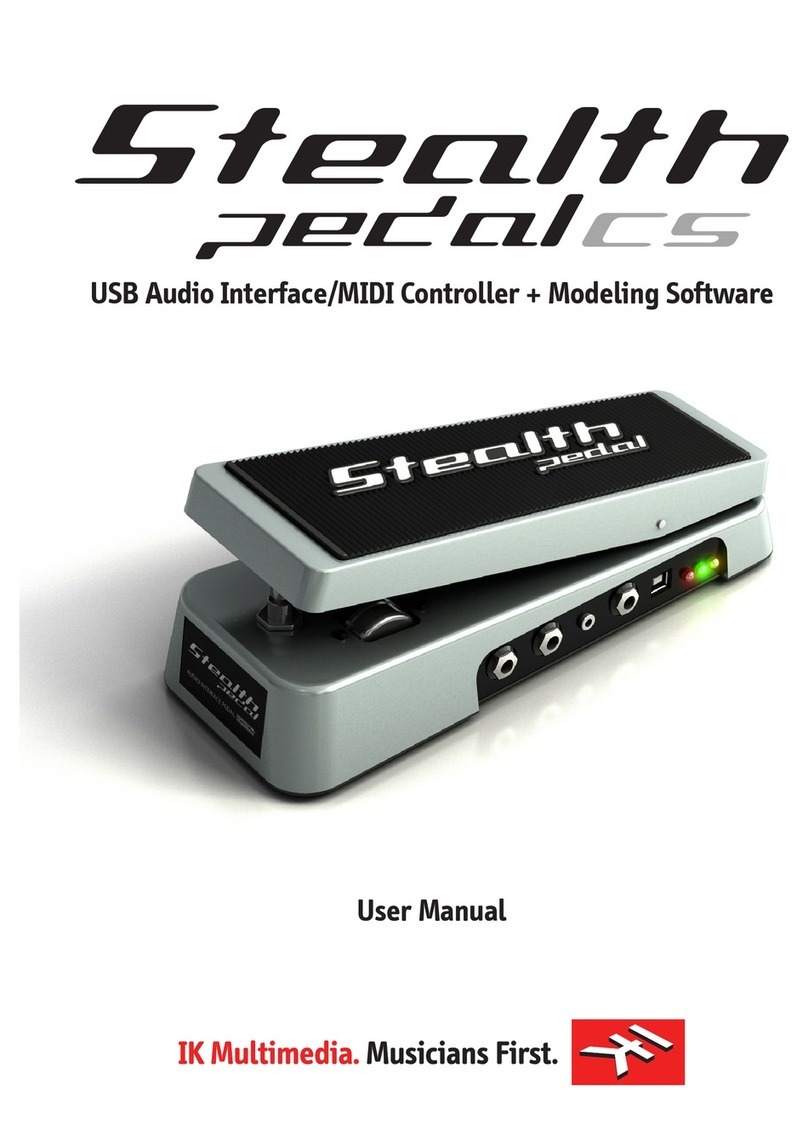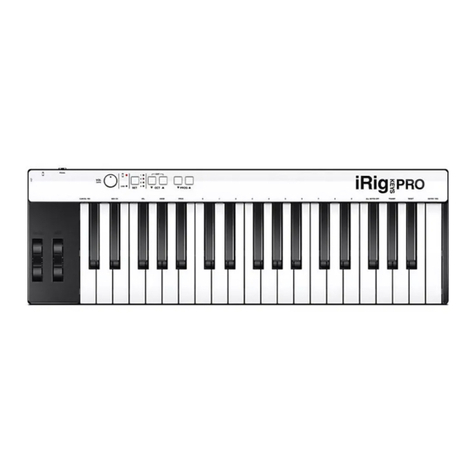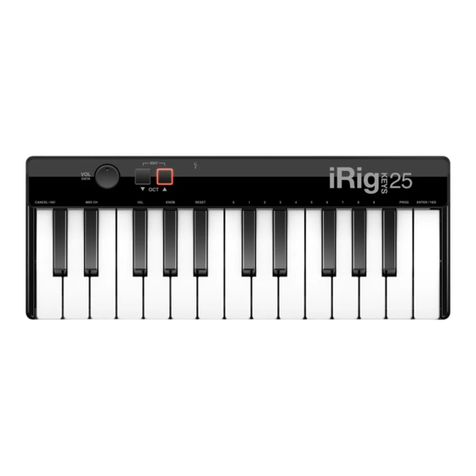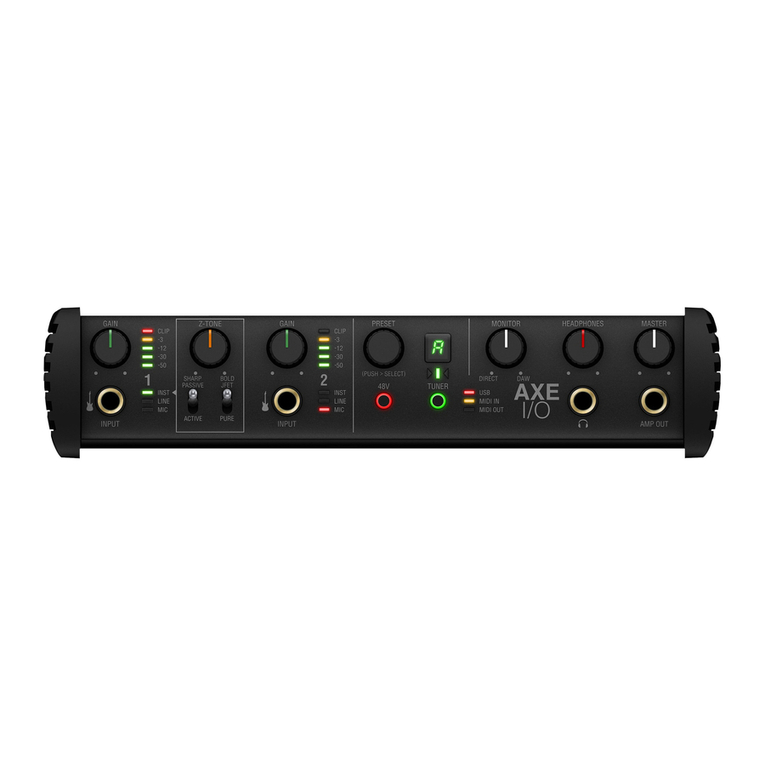
English
5
10. Built-in microphone’s switch - to activate the built-in microphone, slide this switch to the ON position:
when active, the built-in microphone will replace input 1 and its gain can be controlled with the same
potentiometer.
11. Input gain control - adjust the input gain for the signals at Inputs 1, 2, 3 and 4 respectively.
12. Mode switch - this three position switch allows you to decide how to route the four inputs: multichannel,
stereo (with safety channels) or mono (with safety channels).
13. Headphone level - this knob controls the level for the 1/8” TRS headphone output.
14. Host LED - this LED illuminates when the unit is recognised by the host to which it is connected.
15. MIDI IN/OUT LEDs - these LEDs illuminate when MIDI data is received from/transmitted to the MIDI ports.
16. Line out level - this knob controls the level for the two balanced XLR outputs as well as the 1/8” TRS stereo
output.
17. Direct monitor - iRig Pro Quattro I/O provides a direct monitoring path from the inputs to the outputs. When
direct monitoring is enabled, the input signal is mixed with the output signal from your audio software and
routed directly to both the line and headphone outputs.
18. Loopback - the audio that is input to the iRig Pro Quattro I/O from your host is returned back to the host
thru inputs 1 and 2. It is possible to control the level of the loopback stream with the host’s volume control.
19. Limiter - the limiter reduces the level when input signals exceed a set level. Set the Limiter switch on, this
will affect inputs 1 and 2 only (either microphone and instrument).
20. RCA line inputs 3 and 4 - use these RCA inputs with unbalanced line-level devices. These inputs are direct-
to-ADC. As such, no gain control is available.
21. 1/8” TRS line inputs 3 and 4 - use this stereo 1/8” TRS jack input with unbalanced line-level devices. This
input is direct-to-ADC. As such, no gain control is available. Please note that this input will not provide plug-
in power for external 1/8” TRS microphones.
22. 48V phantom power switches - these switches enable 48V phantom power on XLR microphone inputs 1-2
and 3-4 respectively. Front panel LEDs illuminate when phantom power is selected. Phantom has a ramp up
time of around 5 secs.
23. Microphone/Line inputs 3 and 4 - XLR Combo type input sockets - connect microphones or balanced line
level signals. The gain control on the top panel provides gain for both input types.
24. Microphone/Instrument inputs 1 and 2 - XLR Combo type input sockets - connect microphones or Hi-Z
instruments signals. The gain control on the top panel provides gain for both input types.
25. MIDI IN/OUT - 2.5mm jacks for connection of external MIDI equipment.
26. Headphone output-connectonepairofheadphonestothis1⁄8”(3.5mm)TRSjacksocket.
27. Stereo line output-this1⁄8”(3.5mm)TRSjackallowsyoutosendtheaudiosignaltoavideocameraor
other device while monitoring with headphones.
28. Balanced line outputs - outputs 1/L and 2/R are balanced analog line outputs on 3-pin male XLR sockets;
outputs 1/L and 2/R will normally be used to drive the primary monitoring system.
29. Battery compartment - battery compartment for 4 x AA batteries.
30. Standard UNC 1/4”-20 thread adapter - use this thread adapter to attach the iRig Pro Quattro I/O to any
1/4” UNC support.
